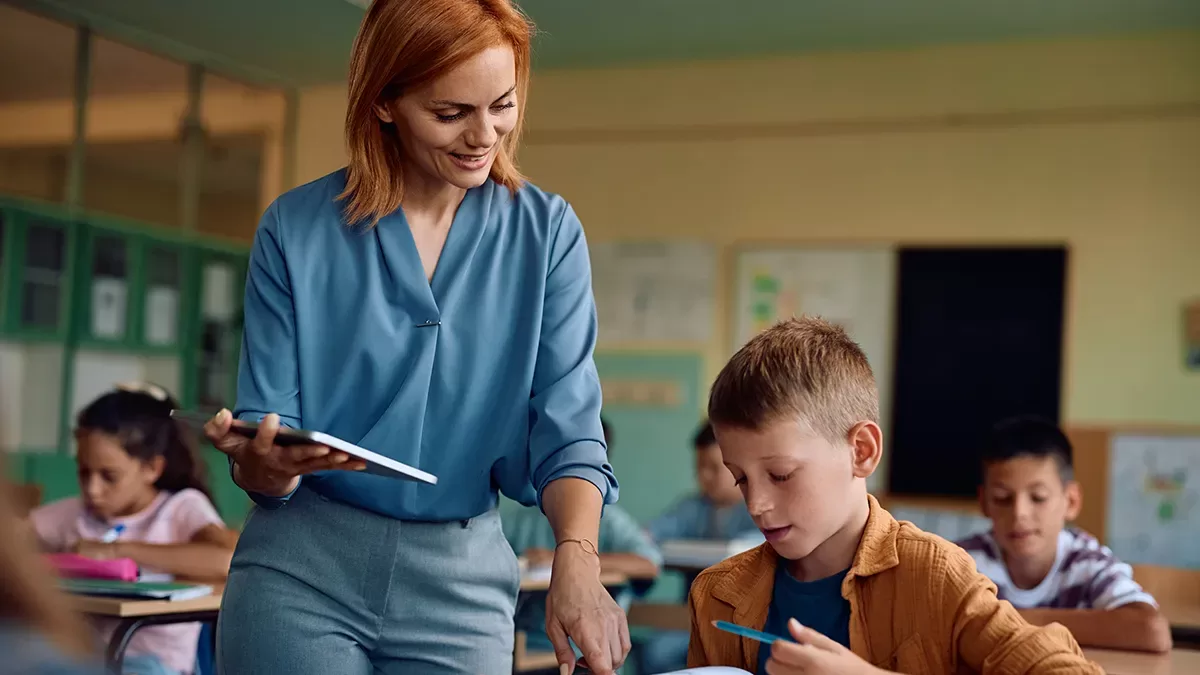Table of Contents
- Conduct a Needs Assessment
- Offer Hands-On Technology Training
- Provide Training on Reflective Practices
- Embed Training in Professional Learning Communities (PLCs)
- Provide Ongoing Support and Follow-Up
- Address Privacy Concerns Through Training
- Normalize Video Use Through Leadership Support
- Tie Training to Student Outcomes
- Conclusion: Training as a Pathway to Success
For teachers to embrace videotaping as a professional growth tool, districts must provide robust training and ongoing support. Without sufficient preparation, teachers may feel overwhelmed or intimidated, especially if they lack familiarity with the technology or the reflective process.
Research on professional development (Desimone, 2009) and technology adoption (Ertmer & Ottenbreit-Leftwich, 2010) highlights that effective training is interactive, job-embedded, and sustained over time. Here is a detailed, research-based framework for providing the necessary training and support to help teachers overcome resistance to videotaping.
1. Conduct a Needs Assessment
Before launching training, districts should understand the specific concerns and skill levels of their teachers.
Steps:
Survey Teachers: Use surveys or focus groups to assess teachers’ comfort levels with video technology, their understanding of its purpose, and their concerns.
Identify Common Barriers: Analyze responses to identify common themes, such as lack of technical skills, privacy concerns, or uncertainty about how to reflect on video recordings.
Tailor Training Accordingly: Design the training program to address the specific needs and concerns of teachers based on the assessment.
Evidence: Effective professional development begins with understanding teachers’ starting points, as shown in Desimone’s Framework for Professional Development (2009).
2. Offer Hands-On Technology Training
Teachers need to feel confident using video tools before they can focus on the reflective process.
Steps:
Provide Step-by-Step Tutorials: Host workshops on how to set up cameras, record lessons, upload videos, and use video analysis tools like Vosaic.
Practice in Low-Stakes Settings: Allow teachers to practice recording and reviewing videos in simulated environments (e.g., empty classrooms) before trying it with students.
Create a Technology Help Desk: Establish a support system, such as a dedicated IT team or peer tech ambassadors, to address technical questions and troubleshooting.
Evidence: Research by Ertmer & Ottenbreit-Leftwich (2010) shows that hands-on training increases teacher confidence in using technology, which is critical for adoption.
3. Provide Training on Reflective Practices
Learning how to analyze and reflect on teaching practices is just as important as mastering the technology.
Steps:
Introduce Reflection Frameworks: Use established tools like the Danielson Framework for Teaching or Jim Knight’s Impact Cycle to guide video reflection. These frameworks help teachers focus on specific aspects of their instruction, such as student engagement or questioning techniques.
- Train on Self-Reflection Techniques: Teach teachers how to identify patterns, strengths, and areas for improvement in their recordings. For instance:
What evidence of student understanding can I see?
How effective were my transitions?
Incorporate Peer Feedback: Train teachers to give and receive constructive feedback in a nonjudgmental manner during collaborative reflection sessions.
Evidence: Studies on reflective practice (Schon, 1983) emphasize the importance of structured reflection in professional learning.
4. Embed Training in Professional Learning Communities (PLCs)
Integrating video training into existing PLCs provides a collaborative, supportive environment for teachers to learn and grow.
Steps:
Incorporate Video into PLC Agendas: Dedicate a portion of PLC time to reviewing and discussing short video clips.
Facilitate Peer Coaching: Pair teachers to review each other’s recordings and provide feedback based on shared goals.
Use Protocols for Video Discussions: Adopt discussion protocols, such as "I Notice, I Wonder," to ensure that feedback remains constructive and focused.
Evidence: Collaborative learning improves teacher outcomes, as shown in research on PLCs by DuFour et al. (2016).
5. Provide Ongoing Support and Follow-Up
One-time training sessions are rarely effective. Sustained support is necessary for teachers to integrate video reflection into their regular practice.
Steps:
Offer Regular Check-Ins: Schedule follow-up sessions where teachers can share their progress, ask questions, and troubleshoot challenges.
Create Online Resources: Develop a repository of how-to videos, FAQs, and sample video reflections that teachers can access on demand.
Assign Mentors or Coaches: Pair teachers with instructional coaches or experienced colleagues who can provide ongoing guidance and encouragement.
Evidence: Sustained, job-embedded professional development is far more effective than one-off workshops, according to Darling-Hammond et al. (2017).
6. Address Privacy Concerns Through Training
Privacy is a significant concern for many teachers when it comes to videotaping. Training should address how recordings will be used, stored, and shared.
Steps:
Explain Privacy Policies: Clearly communicate who will have access to the recordings and how they will be stored securely. Tools like Vosaic allow teachers to control access, ensuring their recordings remain private unless shared intentionally.
Discuss Student Consent: Provide guidance on obtaining consent from students and parents, if necessary, to ensure ethical use of video in the classroom.
Model Ethical Practices: Share examples of how video can be used responsibly for reflection and growth without compromising privacy.
Evidence: Teachers are more likely to embrace video when they feel confident their recordings will be handled ethically and securely, as noted in studies on teacher perceptions of video use (Tripp & Rich, 2012).
7. Normalize Video Use Through Leadership Support
When leaders and coaches use video themselves, it sends a powerful message that video is a normal and valuable tool for growth.
Steps:
Leaders Model Video Reflection: Principals and instructional coaches should record and share their own practice, highlighting both successes and areas for growth.
Host Collaborative Review Sessions: Leaders can facilitate school-wide discussions of anonymized video clips, focusing on specific instructional strategies.
Celebrate Early Adopters: Recognize teachers who use video effectively as role models for their peers.
Evidence: Research on social learning theory (Bandura, 1977) shows that modeling behavior reduces anxiety and increases adoption of new practices.
8. Tie Training to Student Outcomes
Teachers are more likely to engage in video reflection if they see how it improves student learning.
Steps:
Highlight Research Evidence: Share studies, such as The Study of Teacher Coaching Based on Classroom Videos, which demonstrate how video reflection positively impacts student achievement.
Provide Examples of Impact: Show how teachers in similar contexts have used video to improve practices like questioning, differentiation, or classroom management.
Set Shared Goals: Align video reflection with district priorities, such as increasing student engagement or closing achievement gaps.
Evidence: Connecting professional development to student outcomes increases teacher motivation and engagement, as shown in research by Guskey (2002).
Conclusion: Training as a Pathway to Success
Providing effective training and support is critical to overcoming teacher resistance to videotaping. By addressing technical challenges, fostering reflective skills, embedding video use in collaborative learning, and offering sustained guidance, districts can create an environment where teachers feel confident and supported.
Tools like Vosaic simplify the technical side of recording and reflecting, allowing teachers to focus on meaningful growth. With thoughtful training, video can become a transformative tool that not only enhances teacher practice but also leads to improved student outcomes.



